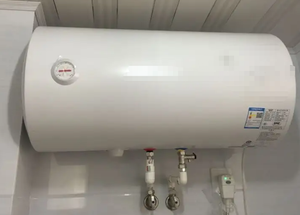
Water heater inspection process - Goods inspection and factory inspection certification services
As a necessary hot water supply device for families, the quality and safety of water heaters directly affect the life and property safety of users as well as their usage experience. To ensure that the products meet the mandatory national standards and quality certification requirements, establishing a professional inspection process is of vital importance. This article will systematically introduce the inspection standards, testing methods and certification requirements of water heaters, providing a complete quality control guide for enterprises.
I. Inspection and Certification of Electronic Ignition Devices
1. Performance Test Certification Standards
Ignition Quality: Spark is bright and clear, with a loud and crisp sound
Reliability test: Successfully ignited ≥ 8 times after 10 consecutive starts.
Safety requirement: No explosion or combustion should occur during startup.
2. Fault Diagnosis Certification
Power supply check: Prioritize checking the battery status
Circuit inspection: Verification of contact reliability of control circuit
Component parameters: Certification of key component performance parameters
II. Hot Water Yield Performance Inspection and Certification
1. Water Output Standard Certification
Test conditions: Temperature rise of 25℃ (e.g., from 20℃ to 45℃)
Passing standard: Actual water output ≥ 90% of the nominal value
Example certification: The water output of the 8-liter water heater is ≥ 7.2 liters.
2. Temperature Control Certification
Maximum temperature rise: Meets the national standard limit of 50℃
Usage suggestion: The water temperature should not exceed 70℃.
Maintenance requirement: Prevent scaling from affecting performance
3. On-site Simple Inspection Method
Sensory test: The surface feels hot to the touch and has a large water output.
Flow verification: Conduct a test to maintain normal water flow rate
III. Safety Protection Device Inspection and Certification
1. Stopping Engine Protection Device Certification
Functional Requirements: Automatically close the intake valve in case of an accidental engine shutdown.
Test method: Blow out the constant flame and check if the valve is closed.
Response time: Safe shutdown completed within a few seconds
2. Structural Safety Certification
Type Classification:
Flue-type water heater
Direct exhaust water heater
Balanced-type water heater
Disabled products: Direct-flow water heaters (Production has been prohibited since 2000)
IV. Electrical Control System Inspection and Certification
1. Intelligent Control Certification
Automatic Control: Reliability of the Intelligent Control System
Electrical safety: Compliant with household appliance safety standards
Function completeness: Verification of additional functions such as remote control and wired control
2. Technical Process Certification
New Technology Application: Performance Certification of Electrical Control Components
Safety supplement: Improve safety protection clauses
Function expansion: Special certification for heating type water heaters
V. Appearance Quality Inspection Certification
1. Surface Quality Certification
Appearance requirements: Smooth and clean surface, free of oil stains
Defect Limitation:
Scratch: Length < 50mm, Depth < 0.1mm
Bruise: Diameter < 4mm, Depth < 0.3mm
The total number of defects is no more than 3.
Identification certification: The stickers are placed correctly and neatly.
2. Internal Structure Certification
Foaming layer quality: No edge overflow, no coarse pores, no blistering, no separation of bubbles
Cleanliness requirements: The inner container should be free of any residual bubbles or other impurities.
Process standard: Complies with the internal cleanliness certification requirements
VI. Installation Structure Inspection and Certification
1. Vacuum Tube Installation Certification
Positioning accuracy: The tube holes show no obvious skewness
Offset standard: Total length offset < 40mm
Installation quality: Ensure that the thermal efficiency is not affected.
2. Coating Durability Certification
Color consistency: The same as the standard sample
Weathering test: Compliant with GB/T1865-1997 standard
Durability certification: Passed through artificial climate aging test
VII. Special Certification for New Products
1. Certification for Heating-Type Water Heaters
Structural Specification: Special structural design requirements
Performance standard: Certification of heating performance parameters
Test method: Verification of specific test procedures
2. Dual-purpose Water Heater Certification
Function Switching: Reliability of Mode Conversion between Hot Water Supply and Heating Modes
Model designation: Standardized product model management system
Technological development: Reserving space for new technologies
VIII. Inspection and Certification Process Standards
1. Sampling Inspection Plan
Implement statistical sampling in accordance with the GB/T standards
Safety-critical projects implement a full inspection system.
Establish a quality traceability management system
2. Test environment requirements
Standardized test laboratory environment
Use calibrated and qualified testing equipment
Strictly follow the safety operation procedures
3. Defect Level Determination
Critical Defect: Projects that affect safety are strictly prohibited.
Serious defect: Major functions fail under strict control
General defect: Minor appearance defects are within the acceptable range as per the standards.
Inspection and Certification Summary
The inspection and factory verification of water heater products is a comprehensive system project involving gas safety, electrical safety and performance. By establishing a professional inspection process and strict quality standards, enterprises can ensure that water heater products meet the requirements of mandatory national certification, providing consumers with safe, reliable and efficient hot water solutions.
Share this product

Water heater inspection process - Goods inspection and factory inspect
As a necessary hot water supply device for families, the quality and safety of water heaters directly affect the user experience.
